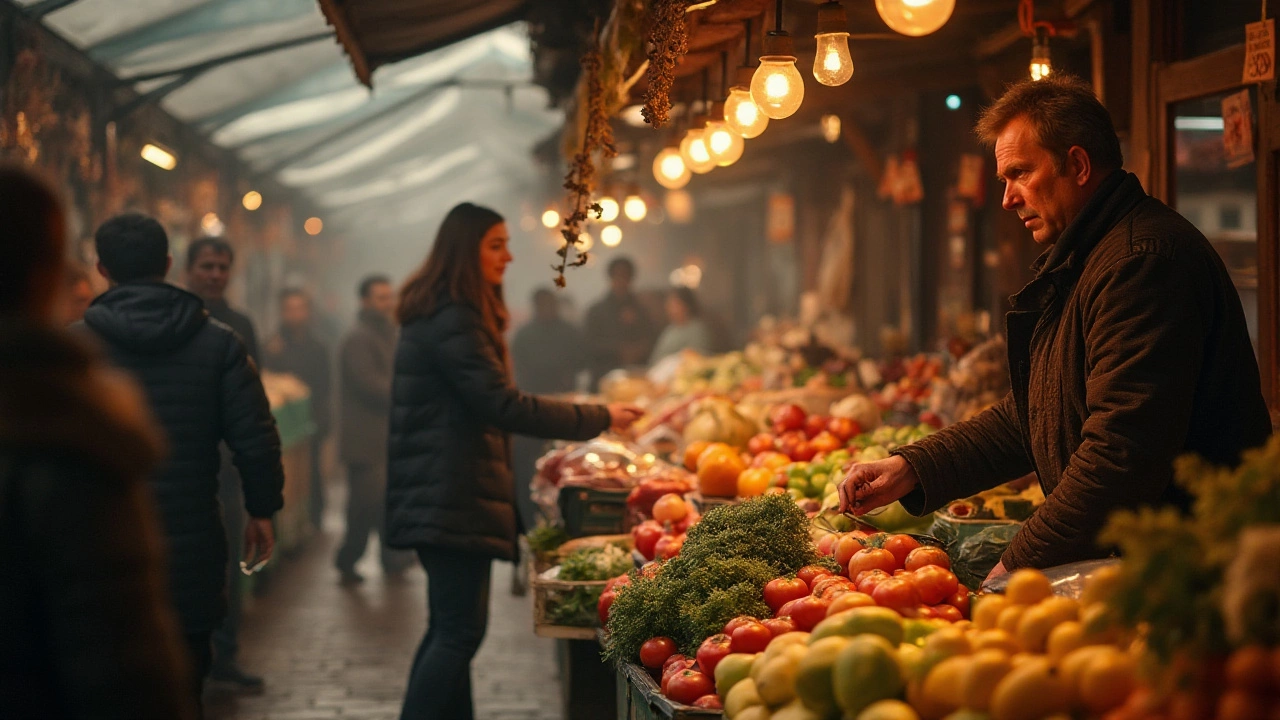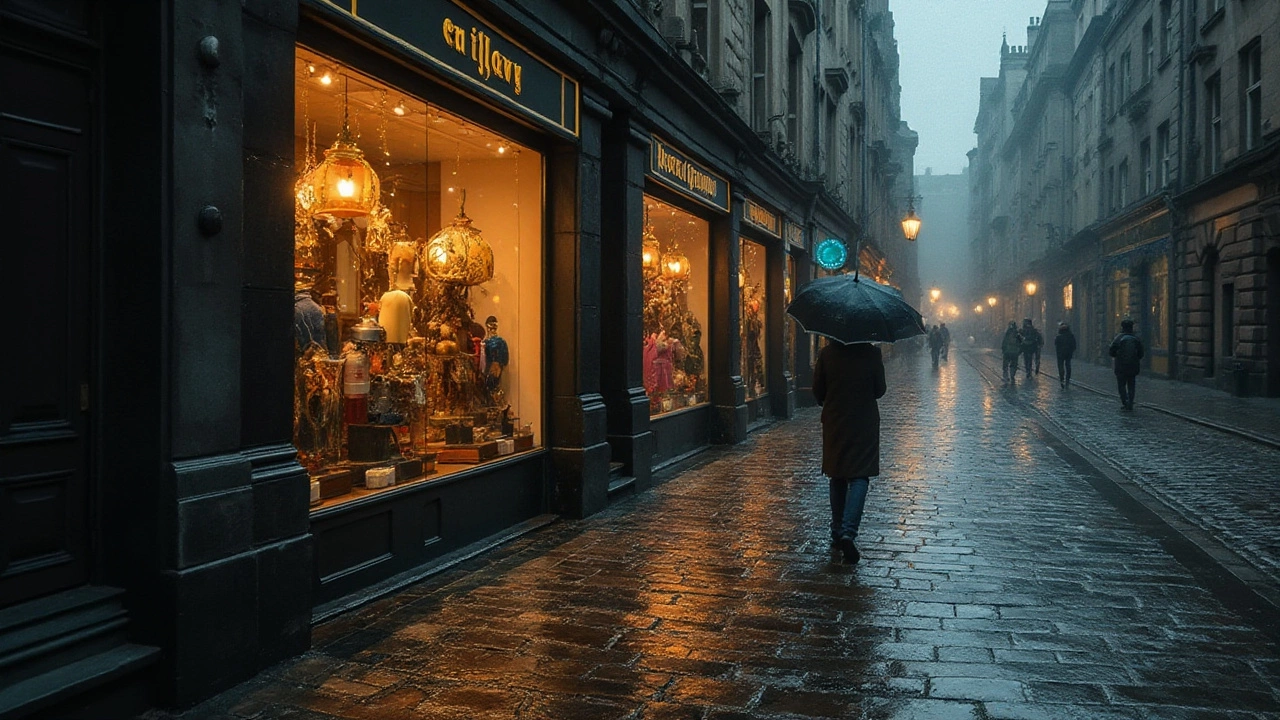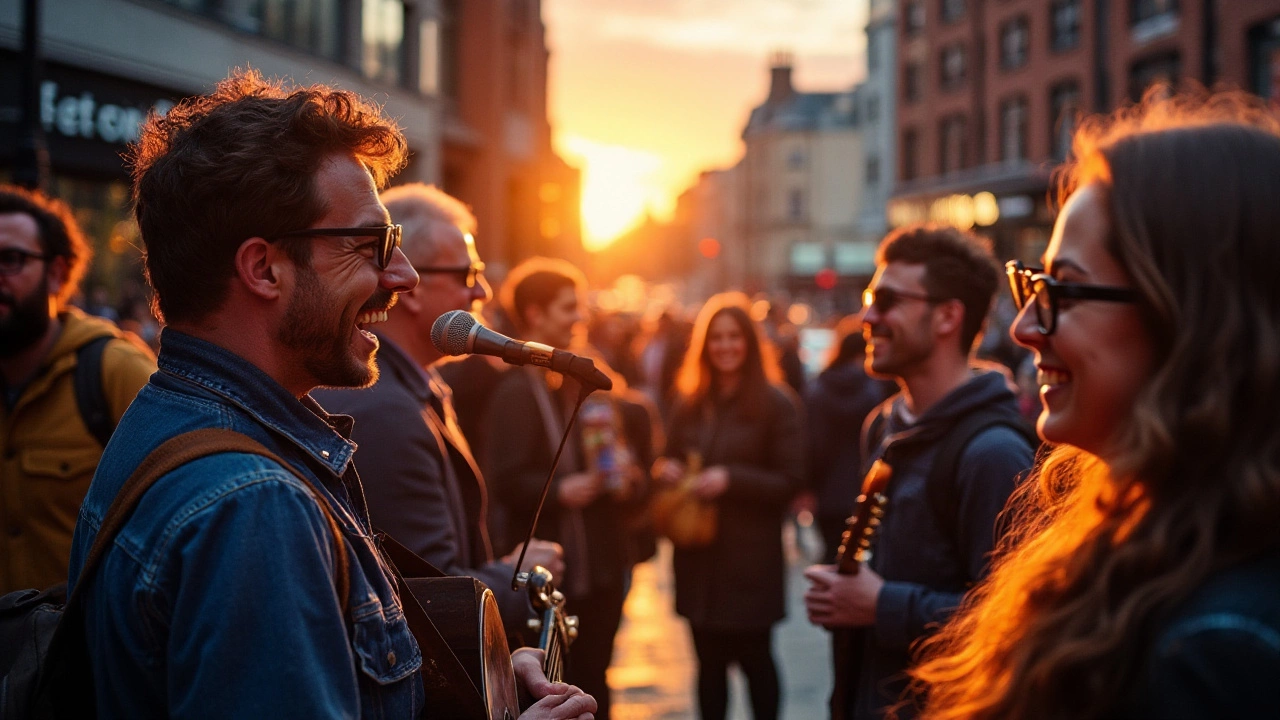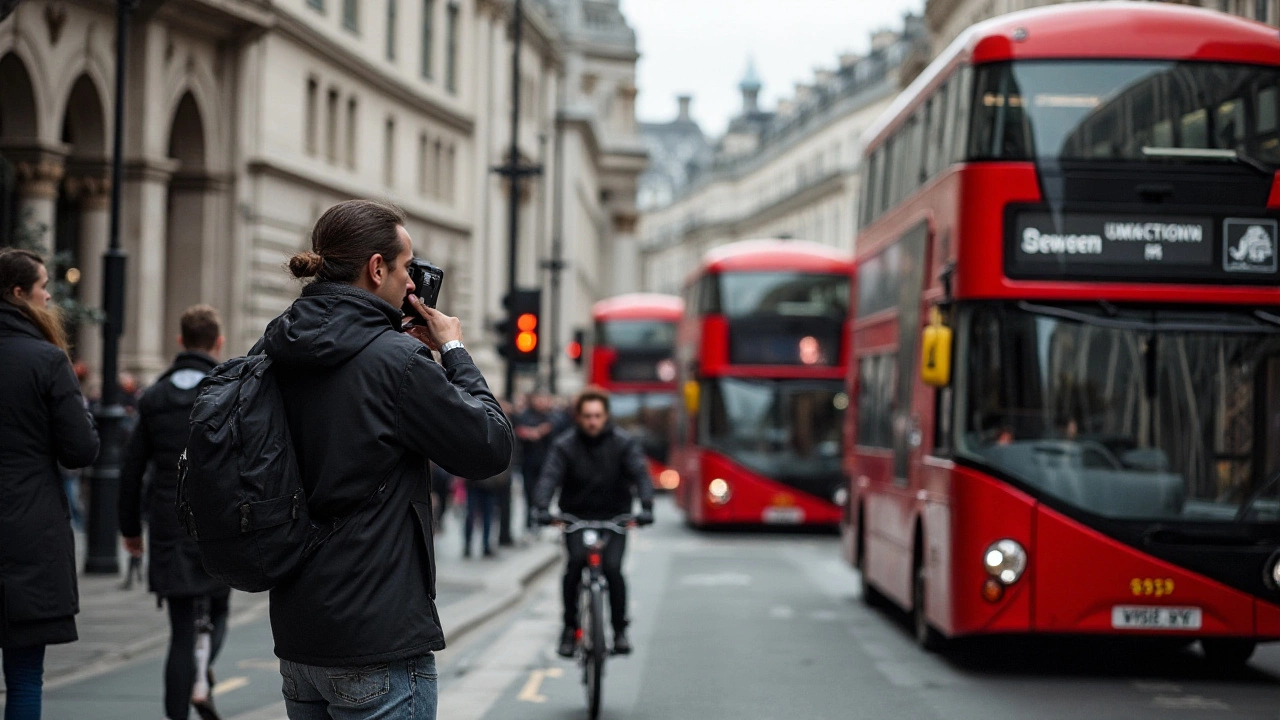Street photography holds a special place in the world of visual arts, capturing the essence of everyday life through spontaneous encounters and unposed subjects. Yet, a perennial debate looms: Is street photography fine art? To answer this, we venture into the bustling streets where life unfolds unscripted, each moment a potential masterpiece.
Photography as an art form is judged on intent, execution, and impact. When street photography transcends mere documentation to evoke emotions, provoke thought, or offer a fresh perspective, it tiptoes into the realm of fine art. This exploration seeks to unravel how a transient moment captured on the street can resonate as deeply as any oil on canvas.
- Defining Fine Art in Photography
- History and Evolution of Street Photography
- Artistic Intent and Expression
- Tips for Creating Fine Art Street Photography
Defining Fine Art in Photography
Understanding what distinguishes fine art photography from other photographic practices is a complex endeavor. At its core, fine art photography is created according to the artist’s vision as an expression of art. It is set apart by its intent, with a primary focus on the aesthetics and conceptual matters rather than documentation or commercial ends. Unlike commercial or journalistic images that often cater to specific client requests or factual reporting, fine art photography aims to communicate a personal vision, often exploring deeper meanings or evoking emotions.
Unlike in other fields of photography, viewers expect to connect with the photographer’s perspective in fine art. The image serves as both a visual representation and a dialog between the creator and audience. Each photographer uses different elements like light, composition, and subject matter to challenge or delight viewers’ senses. Many acclaimed photographers argue that fine art projects might require months, if not years, of conception and refinement, culminating in refined, evocative pieces that go beyond the technical.
Notably, the debate on the boundaries of fine art within photography is not new. In the mid-20th century, the advent of modern photography instigated discussions on whether photography could stand shoulder to shoulder with paintings and sculptures in galleries. Luminaries like Ansel Adams and Alfred Stieglitz championed the cause of photography as fine art. Adams, particularly, emphasized the meticulous craft and thought that went into his works, stating, “A great photograph is one that fully expresses what one feels, in the deepest sense, about what is being photographed.” Their advocacy laid the groundwork for current perceptions of the medium.
Within the marketplace, one way to differentiate fine art photography is through its presentation. High quality prints, choice of materials, and professional framing enhance the artwork’s value and appeal. Unlike digital images that can be reproduced infinitely, fine art pieces often exist in limited editions, making them more precious and desired by collectors. Art galleries and museums frequently host exhibitions that showcase urban photography alongside traditional art forms, further cementing its status.
For the evolving artist, creating fine art demands not only skill but also a deep introspective journey. Each piece often represents a distilled sentiment, a narrative, or a philosophical question. To navigate this landscape successfully, aspiring fine art photographers should dedicate time to understanding their emotional and intellectual motivators. This focus often separates evocative art from other photographic expressions, granting it a timeless quality that resonates with audiences long after the moment has passed.
“To photograph truthfully and effectively is to see beneath the surfaces and record the qualities of nature and humanity which live or are latent in all things.” — Ansel Adams
In summary, defining fine art in photography involves a convergence of personal vision, artistic intent, and the artist's ability to convey deeper meanings through captured moments. The evolution of street photography, when aligned with these principles, reminds us why such images continue to be revered alongside more traditional forms of visual art.

History and Evolution of Street Photography
The roots of street photography stretch back to the early days of photography itself, when technological advancements first made portable cameras possible, freeing photographers to roam bustling street corners and vibrant marketplaces. During the 19th century, the introduction of the handheld Kodak camera by George Eastman in 1888 marked a turning point. This device democratized photography, allowing anyone to capture the spontaneity of urban life. As cities grew and streets buzzed with activity, photographers like Eugène Atget in Paris began documenting the transformations of urban landscapes. Although Atget didn't label himself as a street photographer, his work laid foundational stones for what would become a cherished genre.
Moving into the 20th century, street photography flourished alongside the artistic shifts of the era. The Great Depression provided raw material for photographers like Walker Evans, whose unflinching candid shots captured the heart of America's struggles. As the art world embraced movements like surrealism and Cubism, photography saw its own renaissance in figures like Henri Cartier-Bresson, who coined the term "the decisive moment." His philosophy emphasized capturing ephemeral visual arrangements that might otherwise vanish, emphasizing the power of unplanned artistry.
After World War II, the streets offered a canvas brimming with possibilities, and photographers such as Robert Frank broke new ground. His book, "The Americans,” became a seminal work, critiquing American culture with an honest, sometimes gritty narrative. Diane Arbus followed, delving into the lives on society's periphery, highlighting subjects often overlooked. In a
Such moments of revelation remain the core of the genre.quote, Cartier-Bresson once mused: "To me, photography is the simultaneous recognition, in a fraction of a second, of the significance of an event."
In the digital age, street photography has undergone another transformation. The proliferation of digital cameras and smartphones has rendered everyone a potential street photographer. Social media platforms provide instant galleries, democratizing and expanding access like never before. This contemporary surge has also sparked debates about privacy and the ethics of photographing public life. Yet, the essence of capturing authentic, unscripted humanity remains unchanged. Today, artists continue to redefine street photography, meshing traditional techniques with modern technology, ensuring its evolution reflects both its historic roots and contemporary relevance.

Artistic Intent and Expression
Artistic intent and expression are the heartbeats of street photography as an art form. At its core, this genre captures candid moments in public spaces, but the transformative power lies in the photographer's vision. By consciously selecting what to photograph and how to present it, the ordinary becomes extraordinary. The intent to tell a story or evoke a specific emotion is what elevates an image from mere depiction to art. It's akin to a painter choosing a color palette and brush technique; these choices tell a deeper story, infusing the work with personal meaning and universal resonance.
One might say the streets are an artist's endless canvas, where life is the medium and the human condition the theme. Renowned photographer Henri Cartier-Bresson, often hailed as the father of modern urban photography, described his work as "drawing with a camera." His intent was not just to capture reality but to craft images that resonate with symbolic depth. Cartier-Bresson emphasized the "decisive moment," an instant where form and content align perfectly, capturing both the scene and its essence. His approach underscores the importance of timing and intuition in creating art that transcends the visual to tap into the emotional.
"Photography is an immediate reaction, drawing is a meditation." - Henri Cartier-Bresson
Artistic expression in street photography also involves experimenting with composition, lighting, and subjects. It's about pushing boundaries to deliver a unique perspective that challenges the viewer's understanding of the environment. The juxtaposition of light and shadow can create dramatic contrasts, while unexpected angles can add dynamism. A skilled photographer can transform a mundane street into a stage where narratives unfold, characters interact, and stories are told without words. Each element, meticulously captured, contributes to the overall theme, engaging viewers to ponder the unspoken story.
Intent also plays a crucial role in how these photographs are perceived as fine art. It's about the clarity of the photographer's vision and the ability to communicate that to the audience. Fine art is often subjective, but a well-crafted street photograph invites interpretation, questions, and emotional responses. The magic happens when the image becomes a conversation between the artist and the viewer. Thus, the intent must be palpable, guiding the viewer through the artist's perspective of the chaos, beauty, or irony of urban life.
Artists often explore themes such as identity, isolation, or society, using street photography as their voice. This requires sensitivity and empathy, qualities that enable the artist to see beyond facades and capture the soul of a place and its people. The best street photographers are those who seamlessly blend their intent with the world around them, allowing their work to speak as powerfully as a piece of classic artwork hung in a gallery.

Tips for Creating Fine Art Street Photography
Creating fine art street photography involves blending spontaneity with artistry, transforming ordinary scenes into compelling visual stories. The essence of this craft lies in capturing emotions and narratives that resonate with viewers on a deeper level. To achieve this, photographers must develop a keen eye for composition and timing, often intuitively clicking the shutter at the perfect moment. Initially, it's important to explore your surroundings with an open mind, letting the street scenes unfold naturally. The mundane and overlooked details often turn out to be the most poignant elements in a photograph.
To set your work apart, consider the interplay of light and shadow, which can dramatically alter the mood and tone of your images. Street photography presents unique lighting challenges and opportunities, as you're working with whatever is available. Morning and late afternoon light often yield warm and dynamic shadows that add depth and intrigue to pictures. Additionally, experiment with different angles and perspectives to find those that highlight your subject in a novel way. Incorporating reflections from puddles or windows can also enhance the complexity of your composition.
Editing is another crucial step in elevating street photos into fine art. Post-processing can transform a simple snapshot into a thought-provoking masterpiece by emphasizing specific tones, contrasts, or textures. Finding your editing style often requires experimentation—adjusting colors, desaturating for a timeless quality, or even converting images to black and white to focus on forms and emotions. French photographer Henri Cartier-Bresson once said, "To photograph is to hold one’s breath, when all faculties converge to capture fleeting reality." His work continues to inspire many to seek that perfect synthesis of technique and spontaneity.
Part of your creative journey should also involve developing a personal narrative or theme within your body of work. This provides cohesion and allows your audience to engage with your photography on a more meaningful level. Consider what story you want to tell through your images and how each photograph contributes to that overarching narrative. You might explore the cultural vibrancy of urban life or depict a sense of solitude amidst city crowds. A thematic approach not only enhances the artistic value of your work but also leads to greater recognition in the world of urban photography.
Lastly, hone your skills by continuously learning and practicing. Attend workshops, study classic and contemporary street photographers, and immerse yourself in the community. Participate in photography critiques to gain new perspectives on your work, which can significantly enhance your craft. Keep in mind that street photography is as much about the journey as the destination, and every outing is an opportunity to evolve as an artist. This active engagement fosters a unique style that reflects your voice and vision, ultimately bridging the gap between street photography and fine art.

